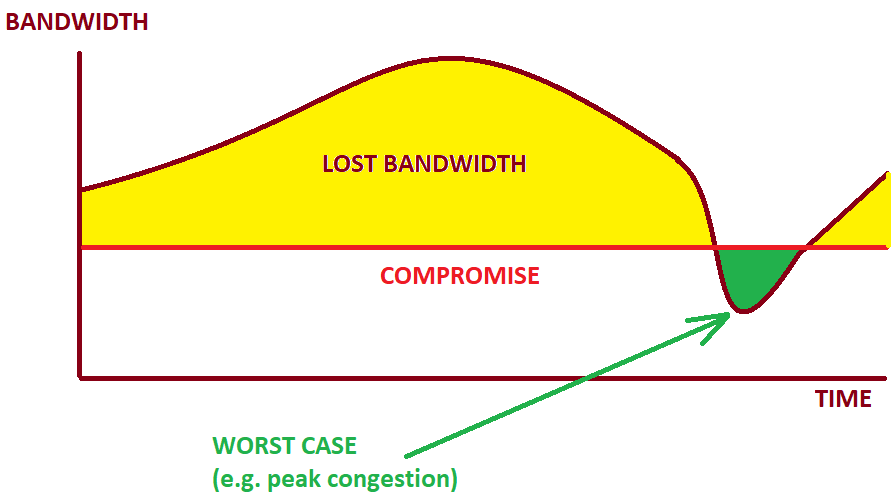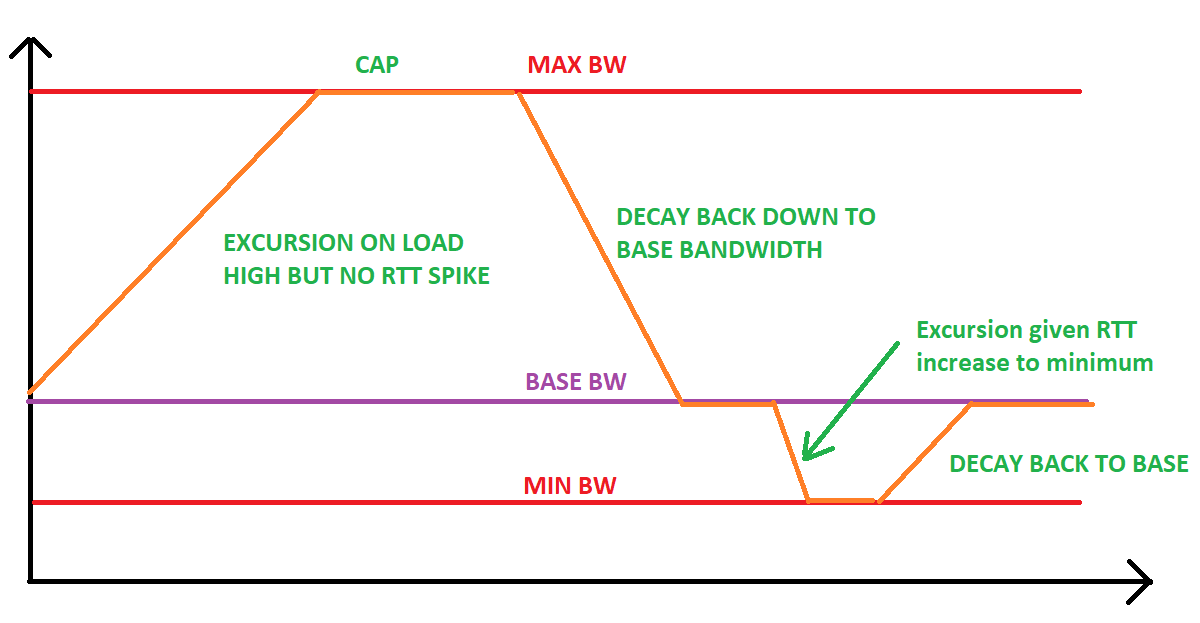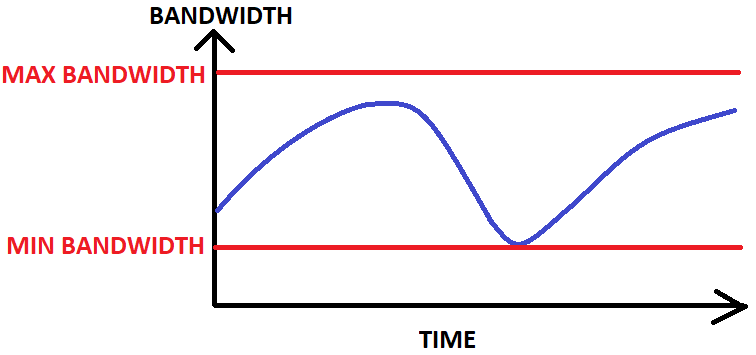If you like cake-autorate and can benefit from it, then please leave a ⭐ (top right) and become a stargazer! And feel free to post any feedback on the official OpenWrt thread here. Thank you for your support.
cake-autorate is a script that automatically adjusts CAKE bandwidth settings based on traffic load and one-way-delay or round-trip-time measurements. cake-autorate is intended for variable bandwidth connections such as LTE, Starlink, and cable modems and is not generally required for use on connections that have a stable, fixed bandwidth.
CAKE Smart Queue Management (SQM) is an algorithm that manages the buffering of data being sent/received by a device such as an OpenWrt router so that no more data is queued than is necessary, minimizing the latency ("bufferbloat") and improving the responsiveness of a network.
This is the development (master) branch. New work on
cake-autorate appears here. It is not guaranteed to be stable.
The stable version for production/every day use is 3.1.1 available from the v3.1 branch
The CAKE algorithm uses static upload and download bandwidth settings to manage its queues. Variable bandwidth connections present a challenge because the actual bandwidth at any given moment is not known.
Because CAKE works with fixed bandwidth parameters, the user must choose a single compromise bandwidth setting. This compromise is not ideal: setting the parameter too low means the connection is unnecessarily throttled to the compromise setting even when the available link speed is higher (yellow). Setting the rate too high, for times when the usable line rate falls below the compromise value, means that the link is not throttled enough (green) resulting in bufferbloat.
The cake-autorate script continually measures the load and One Way Delay (OWD) or Round-Trip-Time (RTT) to adjust the upload and download settings for the CAKE algorithm.
cake-autorate.sh monitors load (receive and transmit utilization)
and ping response times from one or more reflectors (hosts on the
internet), and adjusts the download and upload bandwidth settings for
CAKE.
cake-autorate uses this simple approach:
- with low load, decay rate back to the configured baseline (and subject to refractory period)
- with high load, increase rate subject to the configured maximum
- if bufferbloat (increased latency) is detected, decrease rate subject to the configured min (and subject to refractory period)
cake-autorate requires three configuration values for each direction, upload and download.
Setting the minimum bandwidth: Set the minimum value to the lowest possible observed bufferbloat-free bandwidth. Ideally this setting should never result in bufferbloat even under the worst conditions. This is a hard minimum - the script will never reduce the bandwidth below this level.
Setting the baseline bandwidth: This is the steady state bandwidth to be maintained under no or low load. This is likely the compromise bandwidth described above, i.e. the value you would set CAKE to that is bufferbloat free most, but not necessarily all, of the time.
Setting the maximum bandwidth: The maximum bandwidth should be set to the maximum bandwidth the connection can provide or lower. When there is heavy traffic, the script will adjust the bandwidth up to this limit, and then back off if an OWD or RTT spike is detected. Since repeatedly testing for the maximum bandwidth on load necessarily involves letting some excess latency through, reducing the maximum bandwidth to a level below the maximum possible bandwidth has the benefit of reducing that excess latency associated with testing for the maximum bandwidth, and may allow for some degree of cruising along at that upper limit whilst the true connection capacity is higher than the set maximum bandwidth.
To elaborate on setting the minimum and maximum, a variable bandwidth connection may be most ideally divided up into a known fixed, stable component, on top of which is provided an unknown variable component:
The minimum bandwidth is then set to (or slightly below) the fixed component, and the maximum bandwidth may be set to (or slightly above) the maximum observed bandwidth (if maximum bandwidth is desired) or lower than the maximum observed bandwidth (if the user is willing to sacrifice some bandwidth in favour of reduced latency associated with always testing for the true maximum as explained above).
The baseline bandwidth is likely optimally either the minimum bandwidth or somewhere close thereto (e.g. the compromise bandwidth).
Read the installation instructions in the separate INSTALLATION page.
cake-autorate maintains a detailed log file thats is helpful in discerning performance.
Read about this in the ANALYSIS page.
The user should verify that CPU load is kept within acceptable ranges, especially for devices with weaker CPUs.
cake-autorate uses inter-process communication between multiple
concurrent processes and incorporates various optimisations to reduce
the CPU load needed to perform its many tasks. A call to
ps |grep -e bash -e fping reveals the presence of the multiple
concurrent processes for each cake-autorate instance. This is normal
and expected behaviour.
root@OpenWrt-1:~# ps |grep -e bash -e fping
1731 root 2468 S bash /root/cake-autorate/launcher.sh
1733 root 3412 S bash /root/cake-autorate/cake-autorate.sh /root/cake-autorate/config.primary.sh
1862 root 3020 S bash /root/cake-autorate/cake-autorate.sh /root/cake-autorate/config.primary.sh
1866 root 2976 S bash /root/cake-autorate/cake-autorate.sh /root/cake-autorate/config.primary.sh
1878 root 3200 S bash /root/cake-autorate/cake-autorate.sh /root/cake-autorate/config.primary.sh
2785 root 1988 S fping --timestamp --loop --period 300 --interval 50 --timeout 10000 1.1.1.1 1.0.0.1 8.8.8.8Process IDs can be checked using
cat /var/run/cake-autorate/primary/proc_pids, e.g.:
root@OpenWrt-1:~# cat /var/run/cake-autorate/primary/proc_pids
intercept_stderr=1862
maintain_log_file=1866
fping_pinger=2785
monitor_achieved_rates=1878
main=1733It is useful to keep an htop or atop instance running and run some speed tests and check the maximum CPU utilisation of the processes:
CPU load is proportional to the frequency of ping responses. Reducing the number of pingers or pinger interval will therefore significantly reduce CPU usage. The default ping response rate is 20 Hz (6 pingers with 0.3 seconds between pings). Reducing the number of pingers to three will give a ping response rate of 10 Hz and approximately half the CPU load.
Also, for everyday use, consider disabling any unecessary logging
options, and especially: output_summary_stats,
output_processing_stats and output_load_stats.



